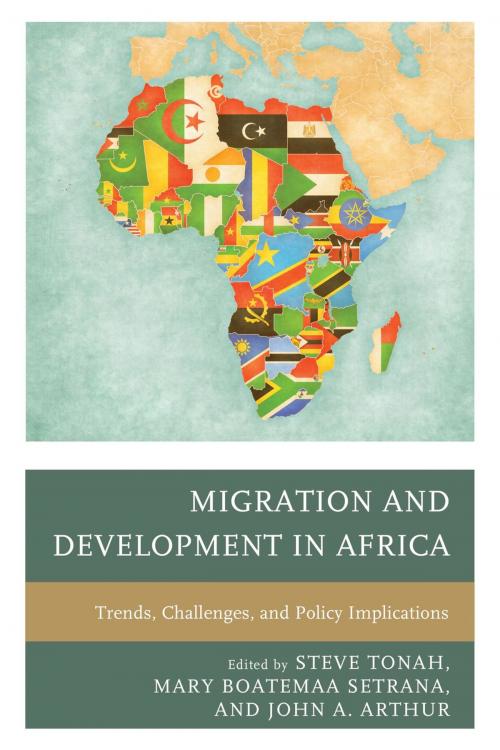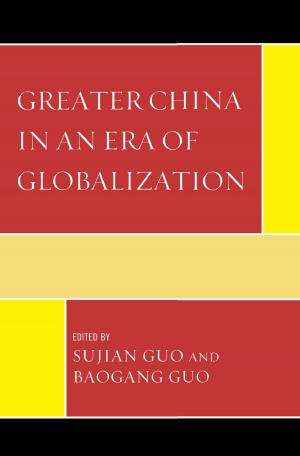Migration and Development in Africa
Trends, Challenges, and Policy Implications
Nonfiction, Social & Cultural Studies, Political Science, Government, Public Policy, International| Author: | Sylvia Esther Gyan, Theophilus Kwabena Abutima, Kwadwo Owusu, Rabiu K. B. Asante, Omon Merry Osiki, Leander Kandilige, Jane Mwanji, Richard Kwabena Owusu Kyei, Joris Schapendonk, Danielle Minteu Kadje, Joseph K. Teye, Peter Bilson Obour | ISBN: | 9781498516846 |
| Publisher: | Lexington Books | Publication: | August 28, 2017 |
| Imprint: | Lexington Books | Language: | English |
| Author: | Sylvia Esther Gyan, Theophilus Kwabena Abutima, Kwadwo Owusu, Rabiu K. B. Asante, Omon Merry Osiki, Leander Kandilige, Jane Mwanji, Richard Kwabena Owusu Kyei, Joris Schapendonk, Danielle Minteu Kadje, Joseph K. Teye, Peter Bilson Obour |
| ISBN: | 9781498516846 |
| Publisher: | Lexington Books |
| Publication: | August 28, 2017 |
| Imprint: | Lexington Books |
| Language: | English |
There are only a few studies that analyze the complex relationship between Migration and development in Africa. The book presents the main trends in African migration since the last two decades. It analyzes the major migration trends, the various migration hubs across the continent and the underlying factors explaining the changing nature of migration across the continent. A few of the chapters in the book examine the phenomenon of migration from a national perspective by focusing on migration trends in countries such as Ghana, Cameroon, Kenya, and Nigeria. Two chapters examine the migration links between Africa and Europe with one of them focusing on the political links between Ghana and the Netherlands while the other focuses on economic exchanges between the Cameroonian diaspora in Germany and selected groups and organizations in Cameroon.
The uniqueness of this book lies in the varied disciplinary viewpoints used by the authors in explaining the phenomenon of migration and development in Africa. The authors are specialists in the fields of sociology, anthropology, geography, history, philosophy and migration studies. Examining migration from so many different perspectives enriches the analysis and brings in new insights that would otherwise have been missing with the use of a single disciplinary perspective.
The book recommends the need for policy coordination by national governments of both origin and destination countries to manage the size and composition of migrants. Most migrant-receiving countries prefer to receive professionals and persons with the required skills and training while keeping out the bulk of untrained and lowly-skilled persons. The result of this is that most migrants leave their countries and enter their destination countries illegally, swelling the numbers of undocumented immigrants.
There are only a few studies that analyze the complex relationship between Migration and development in Africa. The book presents the main trends in African migration since the last two decades. It analyzes the major migration trends, the various migration hubs across the continent and the underlying factors explaining the changing nature of migration across the continent. A few of the chapters in the book examine the phenomenon of migration from a national perspective by focusing on migration trends in countries such as Ghana, Cameroon, Kenya, and Nigeria. Two chapters examine the migration links between Africa and Europe with one of them focusing on the political links between Ghana and the Netherlands while the other focuses on economic exchanges between the Cameroonian diaspora in Germany and selected groups and organizations in Cameroon.
The uniqueness of this book lies in the varied disciplinary viewpoints used by the authors in explaining the phenomenon of migration and development in Africa. The authors are specialists in the fields of sociology, anthropology, geography, history, philosophy and migration studies. Examining migration from so many different perspectives enriches the analysis and brings in new insights that would otherwise have been missing with the use of a single disciplinary perspective.
The book recommends the need for policy coordination by national governments of both origin and destination countries to manage the size and composition of migrants. Most migrant-receiving countries prefer to receive professionals and persons with the required skills and training while keeping out the bulk of untrained and lowly-skilled persons. The result of this is that most migrants leave their countries and enter their destination countries illegally, swelling the numbers of undocumented immigrants.















